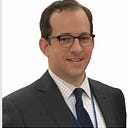Member-only story
Severe Teacher and Staff Shortages in Tennessee Schools
Tennessee public schools suffer from severe teacher and staff shortages, according to a newly-released analysis from the Education Law Center. The report finds the state’s school funding formula (BEP) completely inadequate.
Here’s more on the report from ELC:
A new report by Education Law Center, More Funding Needed to Fix Tennessee School Staff Shortages, shows Tennessee’s high poverty school districts are burdened with larger student-to-teacher ratios than wealthier districts and support staff ratios that are drastically out of line with minimum national standards. This staffing shortage is the result of the well-documented failure of Tennessee’s school funding formula, the Basic Education Program (BEP), to adequately fund the cost of education for all students, especially students in the state’s poorest districts and schools.
The ELC report documents the need for all Tennessee districts to hire more staff than the BEP funds, especially in the case of the state’s poorest districts, which are more understaffed than their wealthier counterparts. ELC’s analysis finds:
· Nearly all districts raise more local funds than required by the BEP. Districts with the least fiscal capacity raise, on average, $375 per pupil above the level required by the BEP formula, compared to over $2,350 per pupil in districts with the most fiscal capacity.
· On average, the BEP funds one teacher for every 23 students. Wealthier districts…
